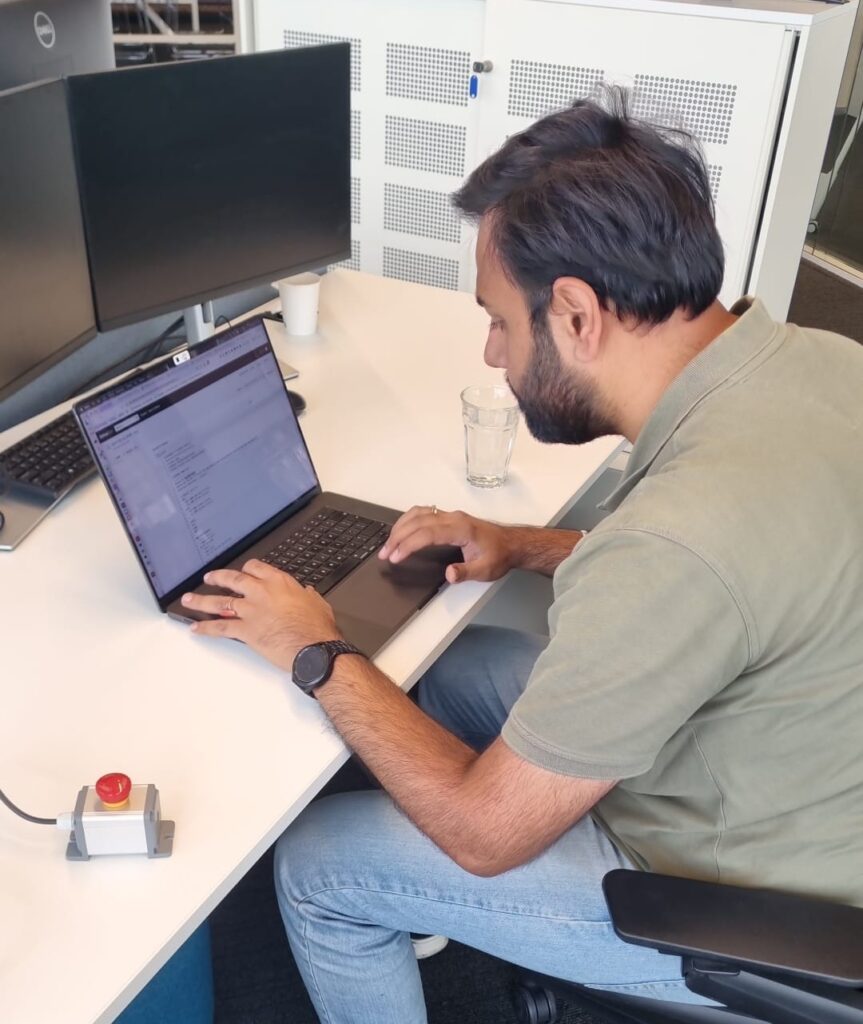Do IoT Fieldlab recently added a new type of wireless communication to their portfolio: a satellite connectivity. By installing the Starlink dish to their building at the Molengraaffsingel, the fieldlab opens the door to a new era of connectivity research and experimentation. This includes investigating application performance, reliability, and data routing.
For now, the satellite connectivity is not used for experiments just yet. Instead, it is primarily used as a research object itself, allowing scientists and companies to study how satellite networks perform compared to terrestrial connectivity offered by the fieldlab, such as 5G and in the future even 6G. But why Starlink?
Unlike traditional satellites, Starlink satellites are located closer to the earth and finds itself in the Low Earth Orbit (LEO), which results in less latency. In addition, the satellites communicate amongst each ground other through laser connectivity. A satellite in space can connect directly to a dish on the ground, providing reliable connectivity. This requires less reliance on ground stations, which is still the case with other satellites. For the latter, it’s more difficult to guarantee global connectivity.
The same goes for terrestrial connectivity, such as 5G, which . For example, Europe overall enjoys a strong fibre infrastructure, but many regions across the world still face challenges in accessing reliable connectivity due to geography and cost. Think of remote or mountainous areas, places where cables or cell towers aren’t practical. This is where satellite networks can bridge the gap. These functional characteristics of this resilient network makes the addition of satellite connectivity at Do IoT Fieldlab self-evident.
The installation is part of the international LeoScope testbed. LeoScope is an open, collaborative platform that allows researchers worldwide to run experiments across different Starlink network point. This global network provides valuable insights into how satellites behave in different regions, what limitations exist, and how they might be overcome.
According to Dr. Nitinder Mohan, expert in Networked Systems and Internet Measurements, this is only the beginning:
“Satellite internet has the potential to radically transform global connectivity. But there are still many open questions about performance, governance, and integration with existing networks, which we can eventually look into with collaborating companies. That’s exactly what we’re exploring here with the new installation.”
One challenge that is researched at Do IoT Fieldlab, is the routes traffic of a satellite. Dutch users, for example, are now often routed via German ground stations, which can affect both performance and compliance with national regulations. This is a critical for applications such as drones and robotics, where reliability and low latency are essential.
The satellite connectivity at Do IoT Fieldlab marks an important step in bridging communication on land, water, and space creating opportunities for new innovations and practical use cases in the years to come.

WhatsApp Image 2025-08-28 at 11.31.56
Nitinder Mohan working on the satellite connection
